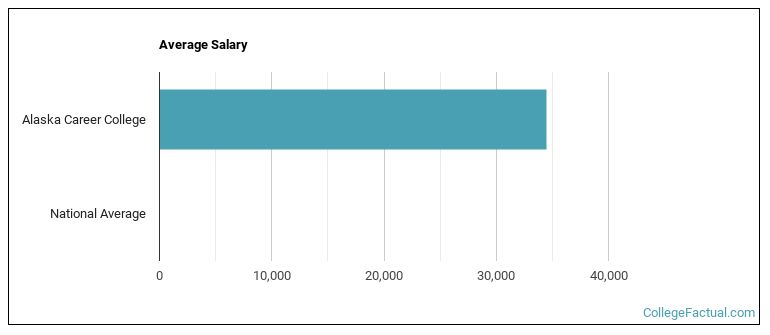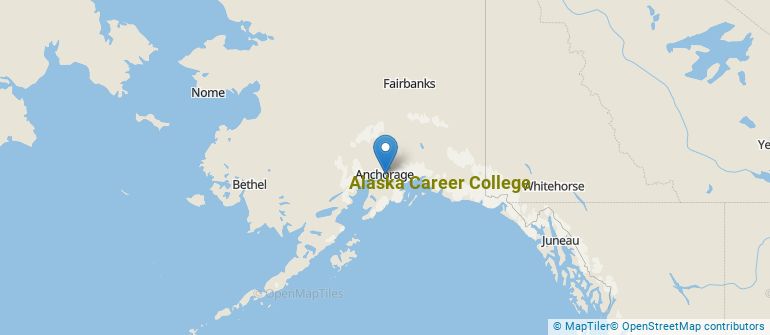 by our College Data Analytics Team
by our College Data Analytics TeamExplore the best ranked schools for the programs you are most interested in.
Alaska Career College was not ranked in College Factual's Best Overall Colleges report this year. This may be because not enough data was available.
If you are worried about getting into Alaska Career College, don't be. The school has a liberal open admissions policy, which means you only need to meet basic requirements in order to be admitted. Still, be sure to submit a complete application and provide any other requested materials.
The student to faculty ratio at Alaska Career College is about average at 15 to 1. This ratio is often used to gauge how many students might be in an average class and how much time professors will have to spend with their students on an individual level. The national average for this metric is 15 to 1.
When estimating how much access students will have to their teachers, some people like to look at what percentage of faculty members are full time. This is because part-time teachers may not have as much time to spend on campus as their full-time counterparts.
The full-time faculty percentage at Alaska Career College is 5%. This is lower than the national average of 47%.
The freshmen retention rate of 73% tells us that most first-year, full-time students like Alaska Career College enough to come back for another year. This is a fair bit higher than the national average of 68%. That's certainly something to check off in the good column about the school.
During the 2017-2018 academic year, there were 412 full-time undergraduates at Alaska Career College.
The net price is calculated by adding tuition, room, board and other costs and subtracting financial aid.Note that the net price is typically less than the published for a school. For more information on the sticker price of Alaska Career College, see our tuition and fees and room and board pages.
While almost two-thirds of students nationwide take out loans to pay for college, the percentage may be quite different for the school you plan on attending. At Alaska Career College, approximately 59% of students took out student loans averaging $7,102 a year. That adds up to $28,408 over four years for those students.

See which majors at Alaska Career College make the most money.
Get more details about the location of Alaska Career College.

Contact details for Alaska Career College are given below.
| Contact Details | |
|---|---|
| Address: | 1415 E Tudor Road, Anchorage, AK 99507-1033 |
| Phone: | 907-563-7575 |
| Website: | www.alaskacareercollege.edu/ |
| Most Popular Majors | Bachelor’s Degrees | Average Salary of Graduates |
|---|---|---|
| Allied Health & Medical Assisting Services | 82 | NA |
| Somatic Bodywork & Therapeutic Services | 45 | NA |
| Health & Medical Administrative Services | 37 | NA |
| Accounting | 20 | NA |
| Clinical/Medical Laboratory Science | 16 | NA |
| Human Resource Management | 15 | NA |
| Business Administration & Management | 0 | NA |
Footnotes
*The racial-ethnic minorities count is calculated by taking the total number of students and subtracting white students, international students, and students whose race/ethnicity was unknown. This number is then divided by the total number of students at the school to obtain the racial-ethnic minorities percentage.
References
More about our data sources and methodologies.